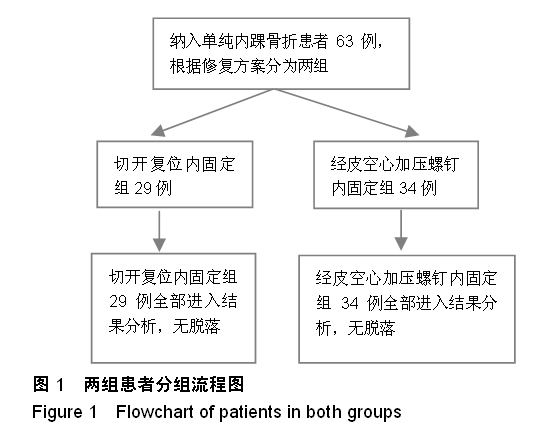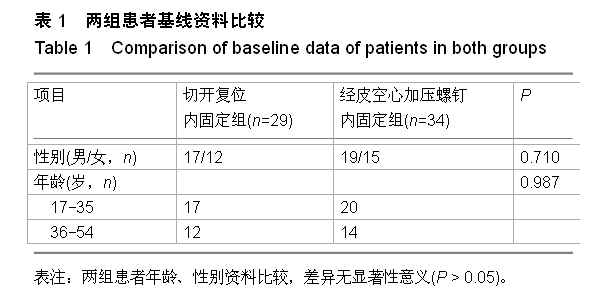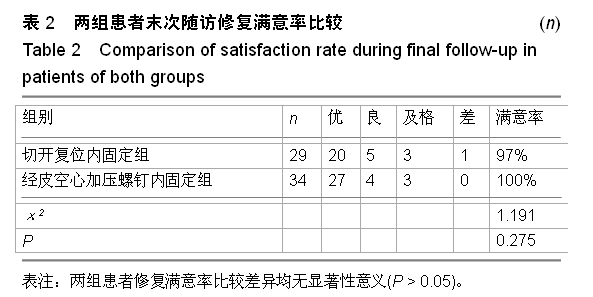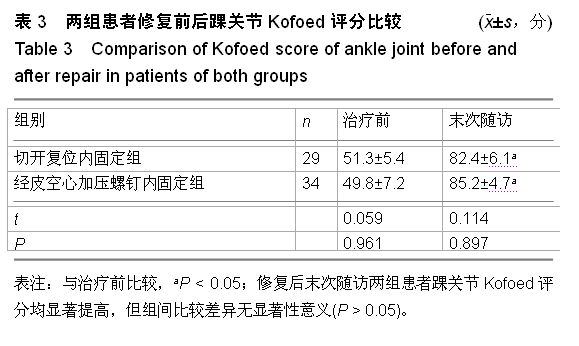中国组织工程研究 ›› 2015, Vol. 19 ›› Issue (31): 5031-5035.doi: 10.3969/j.issn.2095-4344.2015.31.021
• 骨科植入物 orthopedic implant • 上一篇 下一篇
经皮空心加压螺钉与切开复位内固定修复单纯内踝骨折:关节功能恢复比较
王荣生,许育东,罗本环,王炜昌,王伟雄,何立文,刘雄业,杨 庆
- 广东省信宜市人民医院骨科,广东省信宜市 525300
Percutaneous cannulated screw fixation versus open reduction and internal fixation for medial malleolus fracture: recovery of joint function
Wang Rong-sheng, Xu Yu-dong, Luo Ben-huan, Wang Wei-chang, Wang Wei-xiong, He Li-wen, Liu Xiong-ye, Yang Qing
- Department of Orthopedics, People’s Hospital of Xinyi City, Xinyi 525300, Guangdong Province, China
摘要:
背景:踝关节是人体最重要的关节之一,其中内踝骨折十分多见,对该类骨折的修复方式有多种,常用也是较为传统的为切开复位内固定,随着骨折修复的理念转变,目前闭合复位经皮空心钉固定日趋流行,然而两种方式的疗效对比仍需大量临床资料分析。 目的:对比切开复位内固定与经皮空心加压螺钉置入内固定修复内踝骨折的关节功能恢复情况。 方法:纳入广东省信宜市人民医院骨科2009年3月至2013年3月收治的单纯内踝骨折患者63例,根据修复方案分为两组,切开复位内固定组29例,经皮空心加压螺钉内固定组34例。分别于入院时、修复后3个月按照Kofoed评分标准进行患者踝关节功能评定。 结果与结论:患者随访3-12个月。切开复位内固定组29例中27例切口甲级愈合,2例切口乙级愈合;骨折解剖复位29例,复位不良0例。经皮空心加压螺钉内固定组34例中切口均甲级愈合,解剖复位均固定良好。所有患者均骨性愈合,无感染等并发症。按照Kofoed评分,3个月随访时,切开复位内固定组踝关节评分满意率为97%,经皮空心加压螺钉内固定组满意率为100%。提示切开复位内固定与经皮空心加压螺钉置入内固定修复内踝骨折均有肯定的疗效,但经皮空心加压螺钉置入内固定创伤小,可减少感染率,有利于早期踝关节功能恢复锻炼。
中图分类号:




